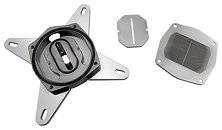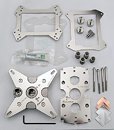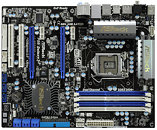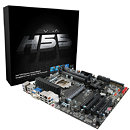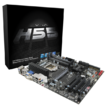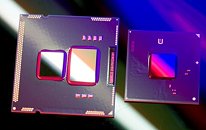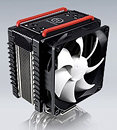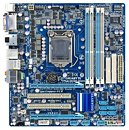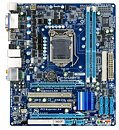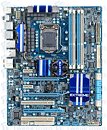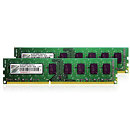Apr 19th, 2025 17:09 EDT
change timezone
Latest GPU Drivers
New Forum Posts
- Axle GTX 1660Ti 6Gb gddr6 bios problem (5)
- AsRock 9070 XT Taichi BIOS confusion (7)
- New PC: Instability and unexpected shutdowns when gaming. (15)
- RX 9000 series GPU Owners Club (414)
- Recommended PhysX card for 5xxx series? [Is vRAM relevant?] (230)
- GPU Pricing and Performance (33)
- Flash another RTX 4060 vBIOS to get zero rpm fan support (11)
- Free Games Thread (4633)
- My review of Heroics Games Launcher software, that allows you to play Epic Games Store, GoG, and Amazon Games (0)
- Pls help me decide on a stop-gap upgrade (CAD currency) (8)
Popular Reviews
- ASUS GeForce RTX 5060 Ti TUF OC 16 GB Review
- ASRock X870E Taichi Lite Review
- NVIDIA GeForce RTX 5060 Ti PCI-Express x8 Scaling
- Palit GeForce RTX 5060 Ti Infinity 3 16 GB Review
- Teevolution Terra Pro Review
- MSI GeForce RTX 5060 Ti Gaming OC 16 GB Review
- ASUS GeForce RTX 5060 Ti Prime OC 16 GB Review
- Zotac GeForce RTX 5060 Ti AMP 16 GB Review
- MSI GeForce RTX 5060 Ti Gaming Trio OC 16 GB Review
- G.SKILL Trident Z5 NEO RGB DDR5-6000 32 GB CL26 Review - AMD EXPO
Controversial News Posts
- NVIDIA GeForce RTX 5060 Ti 16 GB SKU Likely Launching at $499, According to Supply Chain Leak (182)
- NVIDIA Sends MSRP Numbers to Partners: GeForce RTX 5060 Ti 8 GB at $379, RTX 5060 Ti 16 GB at $429 (127)
- NVIDIA Launches GeForce RTX 5060 Series, Beginning with RTX 5060 Ti This Week (107)
- Nintendo Confirms That Switch 2 Joy-Cons Will Not Utilize Hall Effect Stick Technology (105)
- Nintendo Switch 2 Launches June 5 at $449.99 with New Hardware and Games (99)
- Sony Increases the PS5 Pricing in EMEA and ANZ by Around 25 Percent (85)
- NVIDIA PhysX and Flow Made Fully Open-Source (77)
- NVIDIA Pushes GeForce RTX 5060 Ti Launch to Mid-April, RTX 5060 to May (77)
News Posts matching #LGA-1156
Return to Keyword BrowsingThermalright Intros Black Variant of MUX-120 CPU Cooler
Thermalright released a black variant of the MUX-120 tower CPU cooler it released back in September 2009. The Thermalright MUX-120 Black uses nickel-plated black aluminum fins, along with a black-teal X-Silent 120 mm fan. Built on the same design as most tower coolers, the MUX-120 133 x 38 x 160 mm (L x W x H), weighing 670 g. It makes use of four heat pipes to convey heat from the copper convex base to the aluminum fin array. The fan spins at speeds of 600~1300 rpm, with noise levels of 17~25 dBA. The cooler supports sockets LGA1366, LGA1156, and LGA775. It is expected to be moderately priced.

Zalman Displays CNPS9900 MAX CPU Cooler
One of Zalman's latest creations is a refresh on its CNPS9900 CPU cooler, the CNPS9900 MAX. While identical to the CNPS9900 base model (copper) in many ways, the MAX sports a black+graphite look, making use of nickel-plated copper. The design involved two loops of copper fins to which heat is conducted by heat pipes, while air is circulated by a 120 mm FDB bearing fan that spins between 800~1200 rpm, with a noise output of 18~43 dBA. The cooler measures 94 (L) x 131 (W) x 152 (H) mm, weighing 730 g. It supports all current CPU sockets out of the box, including LGA-1366, LGA-1156, AM3, and LGA-775. A tube of ZM-STG2 thermal compound is bundled with it. There's no word on the pricing yet.

MSI Prepares Lower-Cost Lucid Hydra-based LGA1156 Motherboard
MSI is working on its third motherboard that makes use of Lucid Hydra multi-GPU technology, this one aimed to be a more affordable model than the Big Bang Fuzion, for the socket LGA-1156 platform. Lucid Hydra technology allows users to mix and match graphics cards from across brands and models to upscale performance. A newly-release driver (1.5.106) for Hydra is said to increase functionality by adding full support for DirectX multi-GPU scaling, as well as expects significantly higher performance upscaling compared to older drivers. The new motherboard from MSI is the P55-GD88 Hydra, also to be known as P55A Hydra.
Built on a PCB that's different from that of the Big Bang Fuzion, the P55A Hydra uses High-C capacitors only for the CPU VRM, with normal solid-state capacitors for the rest of the board. Unlike the Big Bang Fuzion it has only two PCI-Express 2.0 x16 slots, but these slots work at x16 speeds. Perhaps the only selling point for Hydra on this setup (since Intel P55 platform already supports both SLI and CrossFire, and tests have shown performance hit between x16 and x8 to be insignificant for even high-end GPUs), is the ability to mix and match different kinds of graphics cards, including mixing an ATI Radeon card with an NVIDIA GeForce card.
Built on a PCB that's different from that of the Big Bang Fuzion, the P55A Hydra uses High-C capacitors only for the CPU VRM, with normal solid-state capacitors for the rest of the board. Unlike the Big Bang Fuzion it has only two PCI-Express 2.0 x16 slots, but these slots work at x16 speeds. Perhaps the only selling point for Hydra on this setup (since Intel P55 platform already supports both SLI and CrossFire, and tests have shown performance hit between x16 and x8 to be insignificant for even high-end GPUs), is the ability to mix and match different kinds of graphics cards, including mixing an ATI Radeon card with an NVIDIA GeForce card.
EKL Readies Matterhorn CPU Cooler
EKL brand Alpenföhn unveiled its newest CPU cooler, the Matterhorn. This cooler measures 138 x 100 x 158 mm, and weighs 1067 g (2.35 lbs). The construction is similar to that of several coolers in its category. A pre-lapped copper base draws heat from the CPU. From this, six heatpipes pass, conducting heat to a block of aluminum fins. The fins have notches that help heat dissipation over the air being blown by an attached Föhn120 Wing Boost 120 mm fan, which spins at 500 to 1500 rpm, with a max noise output of 24.8 dBA. The Matterhorn supports most current CPU sockets including LGA-1366, LGA-1156, LGA-775, AM3, AM2(+). Its price and availability are yet to be known.

Koolance Intros CPU-360 Water Block
Koolance rolled out its newest CPU water-block, the CPU-360. The new block boasts of broad compatibility with all current CPU socket types, an advanced microfin cold plate with 0.25mm fins, 0.30 mm channels, and an optimized flow path. The cold plate is complemented with a brass top, all metal surfaces have nickel plating to minimize corrosion. The block measures 4.9" x 4.9" x 0.6" (12.5cm x 12.5cm x 1.5xcm), and weighs 411 g (14.5 oz). While the package excludes nozzles, it includes all the retention material needed for Intel sockets LGA-775, LGA-1156, LGA-1366, and AMD sockets AM3/AM2+/AM2. The CPU-360 is listed on Koolance website at US $84.99.

ASRock Readies USB 3.0 and SATA 6 Gb/s Equipped P55-Deluxe3 Motherboard
ASRock is developing a new upper-mainstream socket LGA-1156 motherboard based on the Intel P55 Express chipset: the P55-Deluxe3. This motherboard builds on the chipset's feature-set, and offers USB 3.0 and SATA 6 Gb/s connectivity. It further borrows from a design ASUS innovated with its P7P55D Premium, which makes use of a PCI-Express 2.0 bridge chip, which connects to the P55 chipset over its PCI-Express 1.1 x4 link, and gives out PCI-Express 2.0 x1 connections to the USB 3.0 and SATA 6 Gb/s controllers. The SATA 6 Gb/s controller gives out two SATA ports (color-coded white), and an IDE connector. The NEC USB 3.0 controller gives out two external ports color-coded blue.
Expansion slots include two PCI-Express 2.0 x16 (electrical x8 when both are populated), a PCI-Express x1, and two PCI slots. Both NVIDIA SLI and ATI CrossFire, are supported. Other connectivity options include 8+2 channel audio with SPDIF connectivity, gigabit Ethernet, eSATA, FireWire, and a number of USB 2.0 ports. The ASRock P55 Deluxe3 should be priced somewhere in the $180~$200 range.
Expansion slots include two PCI-Express 2.0 x16 (electrical x8 when both are populated), a PCI-Express x1, and two PCI slots. Both NVIDIA SLI and ATI CrossFire, are supported. Other connectivity options include 8+2 channel audio with SPDIF connectivity, gigabit Ethernet, eSATA, FireWire, and a number of USB 2.0 ports. The ASRock P55 Deluxe3 should be priced somewhere in the $180~$200 range.

Gigabyte GA-P55A-UD7 Final Design Candidate Pictured
Gigabyte's top of the line socket LGA-1156 motherboard, GA-P55A-UD7 just got a face-lift before release to the market. The GA-P55A-UD7 was pictured in its production form as early as in November, 2009. The retail model has notable changes from the production version. To begin with, GA-P55A series motherboard are characterized with SATA 6 Gb/s and USB 3.0 support. The new GA-P55A-UD7 has four PCI-Express 2.0 x16 slots instead of three on the production one. The four slots are connected to an NVIDIA nForce 200 PCI-E bridge chip, which is connected to the processor. The two x16 links from this chip can be split into four x8 links for each slot. A PLX-made bridge chip provides additional PCI-Express 2.0 lanes (probably connected to the P55 PCH), to drive the USB 3.0 and SATA 6 Gb/s controllers.
The area south of the CPU socket (typically where you expect a northbridge to be located in older generation motherboards), has the nForce 200 and PLX bridge chips. This is cooled by a fusion heatsink which can be connected to a water-cooling loop. It can also offload heat from the CPU VRM and PCH heatsinks. Of the ten internal SATA ports, six are 3 Gb/s ports provided by the P55 PCH, two 3 Gb/s ports from a Gigabyte GSATA2 controller (which also gives out an IDE connector), and two 6 Gb/s ports from a Marvell-made controller. Other features include two color-coded blue USB 3.0 ports, several USB 2.0 ports, Firewire, two gigabit Ethernet interfaces, and 8-channel HD Audio with optical and coaxial SPDIF outputs.
The area south of the CPU socket (typically where you expect a northbridge to be located in older generation motherboards), has the nForce 200 and PLX bridge chips. This is cooled by a fusion heatsink which can be connected to a water-cooling loop. It can also offload heat from the CPU VRM and PCH heatsinks. Of the ten internal SATA ports, six are 3 Gb/s ports provided by the P55 PCH, two 3 Gb/s ports from a Gigabyte GSATA2 controller (which also gives out an IDE connector), and two 6 Gb/s ports from a Marvell-made controller. Other features include two color-coded blue USB 3.0 ports, several USB 2.0 ports, Firewire, two gigabit Ethernet interfaces, and 8-channel HD Audio with optical and coaxial SPDIF outputs.

EVGA Announces its H55/H57 Express Motherboard Lineup
EVGA introduced its lineup of three motherboards based on the new Intel H55 Express and H57 Express chipsets. These motherboards feature LGA-1156 sockets to support all current LGA-1156 Core i3, Core i5, and Core i7 processors. With the Intel Flexible Display Interface support, the boards let you make use of the integrated GPUs on some dual-core Intel Core i3, Core i5, and Pentium processors. Models include EVGA H57 (123-CD-E637-KR), EVGA H55 (123-CD-E635-KR), and EVGA H55V (111-CD-E630-TR), with the H55V being a micro-ATX model.
The EVGA H55 and EVGA H57 offer a little more than the chipset's feature-set, with Firewire, and additional storage controllers for IDE and two additional SATA 3 Gb/s ports. The two feature nearly identical board layouts with 5+1 phase CPU VRM, DVI and D-Sub for display connectivity, 8-channel audio, and a number of USB 2.0 ports. The EVGA H55 has one set of internal USB headers less, and does away with the PCI-Express x1 slots between the PCI-E 2.0 x16 and PCI-E x16 (x4) slots.
The EVGA H55 and EVGA H57 offer a little more than the chipset's feature-set, with Firewire, and additional storage controllers for IDE and two additional SATA 3 Gb/s ports. The two feature nearly identical board layouts with 5+1 phase CPU VRM, DVI and D-Sub for display connectivity, 8-channel audio, and a number of USB 2.0 ports. The EVGA H55 has one set of internal USB headers less, and does away with the PCI-Express x1 slots between the PCI-E 2.0 x16 and PCI-E x16 (x4) slots.

G.Skill Releases its Ultimate DDR3 Memory Modules
G.Skill International Co. Ltd., manufacturer of extreme performance memory and high performance solid-state storage, has today released its ultimate DDR3 memory kit. At 2400 MHz CL9 and 2000 MHz CL6, these ultra high frequency memory modules are available in standard 4GB (2GBx2) memory kits and are specifically tailored for Intel's P55 chipset and LGA-1156 CPUs.
The 2,400MHz CL9 memory modules are the fastest commercially available memory product in the world, allowing overclocking enthusiasts to reach unprecedented levels of performance to achieve the ultimate PC. In addition, G.Skill has also announced a series of ultra low latency DDR3 2,000MHz memory kits, including an extreme CL6, followed by CL7, CL8 and CL9, which perfectly match current Intel Core i5 750 and Core i7 860, 870 CPUs.
The 2,400MHz CL9 memory modules are the fastest commercially available memory product in the world, allowing overclocking enthusiasts to reach unprecedented levels of performance to achieve the ultimate PC. In addition, G.Skill has also announced a series of ultra low latency DDR3 2,000MHz memory kits, including an extreme CL6, followed by CL7, CL8 and CL9, which perfectly match current Intel Core i5 750 and Core i7 860, 870 CPUs.

EVGA H55, H57 Motherboards Pictured, Too
EVGA seems to be ready with two of its first motherboards based on the Intel H55 Express and H57 Express chipsets, supporting processors in the LGA-1156 package, along with support for Intel Flexible Display Interface to make use of the iGPU embedded in some dual-core Pentium, Core i3, and Core i5 processors. The two look nearly similar - infact seem to have the same PCB layout. The LGA-1156 socket is wired to four DDR3 DIMM slots for dual-channel memory support. There are two PCI-Express slots (x16, x4), and three PCI slots. The EVGA H57 model further packs two PCI-Express x1 slots.
The H55/H57 chipset provides six SATA 3 Gb/s ports, all of which are assigned as internal ports. A JMicron-made storage controller provides additional two SATA 3 Gb/s ports, along with an IDE connector to support two devices. Display connectivity on both models includes DVI and D-Sub. Other features include 8-channel audio, gigabit Ethernet, Firewire, and a number of USB 2.0 ports. The H55 model has two internal ports less, along with other internal features that the chipset lacks, such as Remote PC Assist, and Rapid Storage Technology. More details will be out soon.
The H55/H57 chipset provides six SATA 3 Gb/s ports, all of which are assigned as internal ports. A JMicron-made storage controller provides additional two SATA 3 Gb/s ports, along with an IDE connector to support two devices. Display connectivity on both models includes DVI and D-Sub. Other features include 8-channel audio, gigabit Ethernet, Firewire, and a number of USB 2.0 ports. The H55 model has two internal ports less, along with other internal features that the chipset lacks, such as Remote PC Assist, and Rapid Storage Technology. More details will be out soon.

Intel Unveils Core i5 6xx, 6x1 Series Dual-Core Processors
Intel today gave a go ahead for the media to publish reviews of its brand new dual-core processors under the Core i5 6xx and Core i5 6x1 series. The processors are based on the new "Clarkdale" processor die, and make use of the company's 32 nm next generation HKMG manufacturing process. Unlike conventional processor packages based on the Nehalem/Westmere architecture, the new processors move the northbridge component of the system onto the processor package, only that it is based on a separate 45 nm die within the package. The 32 nm processor die houses two processor cores along with up to 4 MB of L3 cache, while it is wired to a larger iGPU die which houses the dual-channel DDR3 memory controller, a graphics core, PCI-Express root complex, along with other components traditionally found on northbridge chips.
The first three models in the new Core i5 series are the 3.20 GHz Core i5 650, 3.33 GHz Core i5 660 and 661 (latter has a faster iGPU), and 3.46 GHz Core i5 670. These processors have the LGA-1156 package and are compatible with existing P55 Express chipset (albeit without the iGPU feature), along with the company's new H55 Express and H57 Express chipsets that support the Flexible Display Interface that provides connectivity to the processors' iGPUs. The new processors feature HyperThreading Technology, with which it provides the operating system with four logical CPUs (threads) to deal with, TurboBoost technology which powers down a core and overclocks the other when the task load is low. Pricing and availability will surface when the processors are formally announced, a little later this month. Meanwhile, motherboard manufacturers are ready with boatloads of new motherboard models based on Intel's two new chipsets. A compilation of links to major reviews on the internet can be found in the day's reviews list on the homepage.
The first three models in the new Core i5 series are the 3.20 GHz Core i5 650, 3.33 GHz Core i5 660 and 661 (latter has a faster iGPU), and 3.46 GHz Core i5 670. These processors have the LGA-1156 package and are compatible with existing P55 Express chipset (albeit without the iGPU feature), along with the company's new H55 Express and H57 Express chipsets that support the Flexible Display Interface that provides connectivity to the processors' iGPUs. The new processors feature HyperThreading Technology, with which it provides the operating system with four logical CPUs (threads) to deal with, TurboBoost technology which powers down a core and overclocks the other when the task load is low. Pricing and availability will surface when the processors are formally announced, a little later this month. Meanwhile, motherboard manufacturers are ready with boatloads of new motherboard models based on Intel's two new chipsets. A compilation of links to major reviews on the internet can be found in the day's reviews list on the homepage.

Thermaltake Ready with Frio CPU Cooler
Thermaltake seems to have finished development of its new high-end CPU cooler, the Thermaltake Frio. Designs of this cooler surfaced as early as in June this year, originally slating it for Computex 2009. After some development delay, it has finally taken shape with the disctinct black+red color scheme the company's Level 10 case comes with. The design consists of a CPU contact block from which five seemingly 8 mm heatpipes arise, conveying heat to a dense aluminum fin array which has largely rectangular fins. The array is cooled a 120 mm fan. There is provision to install one on either sides, that rotates at speeds between 1200 - 2500 rpm. The cooler supports all current CPU sockets, including LGA-1366, LGA-1156, LGA-775, AM3/AM2+. The cooler is now slated for CES 2010.

Intel to Release 17 Processors This January 2010
After giving its socket LGA-1156 quad-core processors a flying start, Intel is poised to release not just a couple of more processors in Q1-2010, but as many as 17 new models on January 7 alone, reports suggest. Among these are chips based on the company's new 32 nm manufacturing technology, which gives the manufacturer headroom to up features and performance, while maintaining low thermal and energy footprints.
This is when the company completes its triad of new generation Core family processors, with the Core i3 series of entry-level thru lower-mainstream processors. This triad starts with Core i3 as an entry-point for "smart performance", with Core i5 in the middle delivering "smart performance with Turbo Boost Technology", and Core i7 at the top, delivering "the ultimate in smart performance".
This is when the company completes its triad of new generation Core family processors, with the Core i3 series of entry-level thru lower-mainstream processors. This triad starts with Core i3 as an entry-point for "smart performance", with Core i5 in the middle delivering "smart performance with Turbo Boost Technology", and Core i7 at the top, delivering "the ultimate in smart performance".

Trio of Gigabyte H55 Motherboards Surface
Gigabyte is ready with a trio of motherboards based on the value desktop chipset for the LGA-1156 platform, the Intel H55 Express. The three offer essential features of the chipset, including support for Flexible Display Interface, which provides connectivity for Intel processors with embedded graphics controllers. The trio includes two micro-ATX models: GA-H55M-S2H and GA-H55M-UD2H, and the ATX GA-H55-UD3H.
The GA-H55M-S2H is entry-level, 7-phase CPU VRM, two DDR3 DIMM slots wired to it for dual-channel memory, a PCI-Express 2.0 x16 slot, PCI-Express x16 (electrical x4), and two PCI slots. All six SATA 3 Gbps ports are assigned as internal ports, with the rear-panel consisting of an 8-channel audio cluster with optical SPDIF output, eight USB 2.0 ports, a keyboard/mouse combo PS/2 port, gigabit Ethernet, and display connectivity including DVI, D-Sub, and HDMI. Solid-state capacitors are limited to the vital VRM areas, with the rest of the board making use of standard electrolytic capacitors.
The GA-H55M-S2H is entry-level, 7-phase CPU VRM, two DDR3 DIMM slots wired to it for dual-channel memory, a PCI-Express 2.0 x16 slot, PCI-Express x16 (electrical x4), and two PCI slots. All six SATA 3 Gbps ports are assigned as internal ports, with the rear-panel consisting of an 8-channel audio cluster with optical SPDIF output, eight USB 2.0 ports, a keyboard/mouse combo PS/2 port, gigabit Ethernet, and display connectivity including DVI, D-Sub, and HDMI. Solid-state capacitors are limited to the vital VRM areas, with the rest of the board making use of standard electrolytic capacitors.

Dual Core Intel Core i3, Core i5 Processors Start Getting Listed
Over a month ahead of its launch, the first wave of Intel's 32 nm based Core i3 and Core i5 series dual-core processors have been listed on German online store HPM-Computer. The pricing and specifications disclosed by these listing confirm the information that surfaced as early as in July, this year. The series starts with Core i3 500 series processors whose clock speeds range between 2.93 to 3.06 GHz, and continue with Core i5 600 series dual-core processors ranged between 3.20 GHz and 3.43 GHz. While both series feature HyperThreading Technology to give the operating system four logical processors (threads) to work with, the Core i3 processors lack the Turbo Boost feature which the Core i5 chips have.
According to the new listing in which the chips are priced in Euros, the 2.93 GHz Core i3 530 processor is priced at 103.90 EUR, and 3.06 GHz Core i3 540 at 120.90 EUR. The Core i5 600 series lineup includes the 3.20 GHz Core i5 650 priced at 160.90 EUR, 3.33 GHz Core i5 660 and 661 priced at 175.90 EUR, and lead by the 3.43 GHz Core i5 670 priced at a premium 252.90 EUR point. All prices include a 19% applicable tax. The IGP clock speed (750 MHz vs. 900 MHz), differentiates Core i5 660 from 661. It is likely that the price of one of those seems to have entered incorrectly. With these processors, Intel may also introduce the Intel H57 Express chipset, and motherboards by various vendors will soon follow. These processors, however, have the same LGA-1156 socket the "Lynnfield" quad-core processors have, which are currently in the market. They may run on existing P55 Express based motherboards too, according to a recent report.
According to the new listing in which the chips are priced in Euros, the 2.93 GHz Core i3 530 processor is priced at 103.90 EUR, and 3.06 GHz Core i3 540 at 120.90 EUR. The Core i5 600 series lineup includes the 3.20 GHz Core i5 650 priced at 160.90 EUR, 3.33 GHz Core i5 660 and 661 priced at 175.90 EUR, and lead by the 3.43 GHz Core i5 670 priced at a premium 252.90 EUR point. All prices include a 19% applicable tax. The IGP clock speed (750 MHz vs. 900 MHz), differentiates Core i5 660 from 661. It is likely that the price of one of those seems to have entered incorrectly. With these processors, Intel may also introduce the Intel H57 Express chipset, and motherboards by various vendors will soon follow. These processors, however, have the same LGA-1156 socket the "Lynnfield" quad-core processors have, which are currently in the market. They may run on existing P55 Express based motherboards too, according to a recent report.

MSI Readies H57M-ED65 Micro-ATX Motherboard
Come Q1 2010, and Intel will be expanding its socket LGA-1156 platform with dual-core processors, and processors with on-die graphics. Along with these, Intel will be releasing the H57 Express chipset which supports the Flexible Display technology which handles the connectivity for the processors' on-die graphics. Motherboard vendors seem to be ready well ahead, and the second such company with a product on display is MSI, with its H57M-ED65. This motherboard is based on the micro-ATX form-factor, and builds on the chipset's features, while also appearing to be enthusiast-friendly.
The CPU is powered by a lavish 10-phase VRM with elaborate heatsinks over the DrMOS chips. It completely does away with PCI, and features only PCI-Express slots. There are are two PCI-Express x16 slots (electrical x16, x4), and two PCI-Expres x1 slots. Apart from the six SATA 3 Gb/s ports the chipset provides, an additional storage controller provides two more SATA 3 Gb/s ports, and an IDE connector. The board makes full use of the Flexible Display technology, providing DVI, D-Sub, HDMI, and DisplayPort as display connectivity options. A number of USB ports, PS/2, gigabit Ethernet, 8-channel audio with optical SPDIF, eSATA, and FireWire make for the rest of the rear-panel. Its enthusiast-friendliness is further vindicated by the presence of the OC Genie feature, on the fly base clock controls, and power/reset buttons onboard. Expect this to feature in the company's first wave of H57 motherboards.
The CPU is powered by a lavish 10-phase VRM with elaborate heatsinks over the DrMOS chips. It completely does away with PCI, and features only PCI-Express slots. There are are two PCI-Express x16 slots (electrical x16, x4), and two PCI-Expres x1 slots. Apart from the six SATA 3 Gb/s ports the chipset provides, an additional storage controller provides two more SATA 3 Gb/s ports, and an IDE connector. The board makes full use of the Flexible Display technology, providing DVI, D-Sub, HDMI, and DisplayPort as display connectivity options. A number of USB ports, PS/2, gigabit Ethernet, 8-channel audio with optical SPDIF, eSATA, and FireWire make for the rest of the rear-panel. Its enthusiast-friendliness is further vindicated by the presence of the OC Genie feature, on the fly base clock controls, and power/reset buttons onboard. Expect this to feature in the company's first wave of H57 motherboards.

ASUS Readies ROG Maximus III Extreme Motherboard
ASUS is ready with yet another socket LGA-1156 motherboard, only this one you can't pass on. The Maximus III Extreme is the company's second motherboard in its coveted Republic of Gamers series of high-end motherboards suited for gamers and overclockers, and will end up as the best ASUS has to offer for this platform. Based on the P55 Express chipset, the Maximus III Extreme seems to make use of an additional PCI-Express bridge chip to provide two x16 links. External lane switching further allows there to be four slots with x8 bandwidth. A fifth x16 slot could be wired to the PCH, being electrically x4 to accommodate other PCI-E devices.
The CPU socket is powered by a 11-phase digital PWM circuit, which uses a SuperML capacitor. The four DDR3 DIMM slots are powered by a 3-phase circuit. Apart from the main 24-pin and 8-pin CPU power connectors, there is an additional 6-pin connector. We suspect this to be a PCI-Express power connector for additional electrical stability, which could help overclocking.
The CPU socket is powered by a 11-phase digital PWM circuit, which uses a SuperML capacitor. The four DDR3 DIMM slots are powered by a 3-phase circuit. Apart from the main 24-pin and 8-pin CPU power connectors, there is an additional 6-pin connector. We suspect this to be a PCI-Express power connector for additional electrical stability, which could help overclocking.

Intel Readies P55 Chipset B3 Stepping Update
Intel's is readying a hardware update for its P55 Express chipset, currently the only core-logic for the company's brand new socket LGA-1156 processor platform. The new B3 stepping of the P55 PCH will bring with it a little more than new MM number and S-spec numbers. A list of changes is as follows:
- New MM number and S-spec numbers for the converted products;
- Firmware and minor BIOS updates are required with the conversion;
- Processor MRC/microcode update required to enable future processors;
- Recommended storage driver upgrade from Intel MSM 8.9 to Intel RST 9.5.

Gigabyte Readies GA-P55A-UD7 to Lead P55A Series
Closely trailing the GA-X58A-UD7, Gigabyte is preparing a new high-end socket LGA-1156 motherboard based on the Intel P55 chipset. The GA-P55A-UD7 is touted to lead the new pack of motherboards under the P55A series, which bring technologies such as USB 3.0 and SATA 6 Gb/s integrated for the LGA-1156 platform. Observantly, after a very long time, Gigabyte has made use of an NVIDIA nForce chip on its high-end motherboards, certainly the first time it has made use of the nForce 200 PCI-Express bridge chip. Gigabyte made some clever use of its real-estate, especially with regards to the PCI-Express bandwidth.
The LGA-1156 socket is powered by a 24+3 phase circuit. It connects to four DDR3 DIMM slots for dual-channel memory. Its PCI-Express 2.0 x16 link is wired to an NVIDIA nForce 200 chip, which gives out 32 PCI-Express 2.0 lanes to ensure support for 3-way NVIDIA SLI, ATI CrossFireX is naturally supported. There are three PCI-Express x16 slots (which arrange into x16, x16, NC; or x16, x8, x8, depending on how they're populated). A PLX-made PCI-Express bridge chip (probably connected to the PCH) ensures full-bandwidth PCI-Express 2.0 x1 connections to the NEC two port USB 3.0 controller, and the two port SATA 6 Gb/s controller made by Marvell. Apart from the six (color-coded blue) SATA 3 Gb/s ports the PCH provides, the two color-coded white ports on the south are SATA 6 Gb/s, while the two on the north are connected to a Gigabyte GSATA2 SATA 3 Gb/s controller, which also gives out an IDE connector.
The LGA-1156 socket is powered by a 24+3 phase circuit. It connects to four DDR3 DIMM slots for dual-channel memory. Its PCI-Express 2.0 x16 link is wired to an NVIDIA nForce 200 chip, which gives out 32 PCI-Express 2.0 lanes to ensure support for 3-way NVIDIA SLI, ATI CrossFireX is naturally supported. There are three PCI-Express x16 slots (which arrange into x16, x16, NC; or x16, x8, x8, depending on how they're populated). A PLX-made PCI-Express bridge chip (probably connected to the PCH) ensures full-bandwidth PCI-Express 2.0 x1 connections to the NEC two port USB 3.0 controller, and the two port SATA 6 Gb/s controller made by Marvell. Apart from the six (color-coded blue) SATA 3 Gb/s ports the PCH provides, the two color-coded white ports on the south are SATA 6 Gb/s, while the two on the north are connected to a Gigabyte GSATA2 SATA 3 Gb/s controller, which also gives out an IDE connector.

NVIDIA Shuns Lucid Hydra
A promising new technology from LucidLogix, the Hydra, has perhaps hit its biggest roadblock. The Hydra multi-GPU engine allows vendor-neutral and model-neutral GPU performance upscaling, without adhering to proprietary technologies such as NVIDIA SLI or ATI CrossfireX. NVIDIA, which is staring at a bleak future for its chipset division, is licensing the SLI technology to motherboard vendors who want to use it on socket LGA-1366 and LGA-1156 motherboards, since Intel is the only chipset vendor. On other sockets such as LGA-775 and AM3, however, NVIDIA continues to have chipsets that bring with them the incentive of SLI technology support. NVIDIA's licensing deals with motherboard vendors are particularly noteworthy. For socket LGA-1366 motherboards that are based on Intel's X58 Express chipset, NVIDIA charges a fee of US $5 per unit sold, to let it support SLI. Alternatively, motherboard vendors can opt for NVIDIA's nForce 200 bridge chip, which allows vendors to offer full-bandwidth 3-way SLI on some high-end models. For the socket LGA-1156 platform currently driven by Intel's P55 Express chipset, the fee is lower, at US $3 per unit sold.
The Lucid Hydra engine by design is vendor-neutral. It provides a sort of abstraction-layer between the OS and the GPUs, and uses the available graphics processing resources to upscale resulting performance. This effectively kills NVIDIA's cut, as motherboard vendors needn't have the SLI license, and that users of Hydra won't be using SLI or Crossfire anymore. Perhaps fearing a loss of revenue, NVIDIA is working on its drivers to ensure that its GeForce GPUs don't work on platforms that use Hydra. Perhaps this also ensures "quality control, and compatibility", since if the customer isn't satisfied with the quality and performance of Hydra, NVIDIA for one, could end up in the bad books. This could then also kick up warranty issues, and product returns.
The Lucid Hydra engine by design is vendor-neutral. It provides a sort of abstraction-layer between the OS and the GPUs, and uses the available graphics processing resources to upscale resulting performance. This effectively kills NVIDIA's cut, as motherboard vendors needn't have the SLI license, and that users of Hydra won't be using SLI or Crossfire anymore. Perhaps fearing a loss of revenue, NVIDIA is working on its drivers to ensure that its GeForce GPUs don't work on platforms that use Hydra. Perhaps this also ensures "quality control, and compatibility", since if the customer isn't satisfied with the quality and performance of Hydra, NVIDIA for one, could end up in the bad books. This could then also kick up warranty issues, and product returns.

DFI Prepares First P55 Mini-ITX Motherboard
Here is one of the first socket LGA-1156 motherboards in the mini-ITX form-factor, certainly the first one based on the Intel P55 chipset. Packed in its 6.7 x 6.7 inch PCB are a 6 phase digital PWM circuit powering the CPU (socket made by LOTES), two DDR3 DIMM slots for dual-channel memory, and a decent utilization of the feature-set of the P55 PCH, which is cooled by a tiny low-profile heatsink. The PCH gives out three internal SATA 3 Gbps ports, and one powered eSATA port.
The 8-channel HD Audio also takes care of optical and co-axial SPDIF connectivity. Gigabit Ethernet, and four USB 2.0 ports make for the rest of the rear-panel. Two headers make room for four more USB 2.0 ports. The lone expansion slot is a generous PCI-Express 2.0 x16, which will accommodate any PCI-Express addon card. You will especially need it, as the P55 platform relies on discrete graphics. With its ABS II, debug LED, and rear-panel clear CMOS button, the board also tries to be as overclocker-friendly as it can afford to be, with its limited resources. Its pricing is yet to be known, though the launch isn't very far off.
The 8-channel HD Audio also takes care of optical and co-axial SPDIF connectivity. Gigabit Ethernet, and four USB 2.0 ports make for the rest of the rear-panel. Two headers make room for four more USB 2.0 ports. The lone expansion slot is a generous PCI-Express 2.0 x16, which will accommodate any PCI-Express addon card. You will especially need it, as the P55 platform relies on discrete graphics. With its ABS II, debug LED, and rear-panel clear CMOS button, the board also tries to be as overclocker-friendly as it can afford to be, with its limited resources. Its pricing is yet to be known, though the launch isn't very far off.

Noctua Presents NH-D14 Premium CPU Cooler
Noctua today officially presented its long-awaited NH-D14 premium CPU cooler. Combining a massive six heatpipe dual radiator design with an exquisite NF-P14/NF-P12 dual fan configuration, the NH-D14 is built to further improve the renowned quiet cooling performance of Noctua's award-winning NH-U12P series.
"Our NH-U12P coolers are widely regarded as one of the best solutions on the market, so it makes us especially proud that we can offer a further substantial improvement in quiet cooling performance with the new NH-D14", explains Mag. Roland Mossig, Noctua CEO. "The NH-D14 in Ultra-Low-Noise mode actually outperforms the NH-U12P at full fan speed, so we're confident that this cooler will appeal to overclockers and silent enthusiasts alike."
"Our NH-U12P coolers are widely regarded as one of the best solutions on the market, so it makes us especially proud that we can offer a further substantial improvement in quiet cooling performance with the new NH-D14", explains Mag. Roland Mossig, Noctua CEO. "The NH-D14 in Ultra-Low-Noise mode actually outperforms the NH-U12P at full fan speed, so we're confident that this cooler will appeal to overclockers and silent enthusiasts alike."

Transcend Introduces DDR3 1333MHz Memory Kit for Intel Core i5 Platforms
Transcend Information Inc., a leading global manufacturer of memory modules, today announced shipping of a new DDR3 1333MHz memory module kit designed for Intel's latest LGA-1156 Core i5 and Core i7 platforms.
The DDR3 1333 MHz dual-channel memory kit is perfectly matched for use with Intel's next-generation desktop PC platform, Core i5. The new Core i5, which is based on Intel's new Nehalem architecture, is the first Intel processor to integrate both a 16-lane PCI Express 2.0 graphics port and a two-channel DDR3 memory controller, enabling all input/output and manageability functions to be handled by the single-chip Intel P55 core-logic.
The DDR3 1333 MHz dual-channel memory kit is perfectly matched for use with Intel's next-generation desktop PC platform, Core i5. The new Core i5, which is based on Intel's new Nehalem architecture, is the first Intel processor to integrate both a 16-lane PCI Express 2.0 graphics port and a two-channel DDR3 memory controller, enabling all input/output and manageability functions to be handled by the single-chip Intel P55 core-logic.
Kingmax Unveils Hercules PC3-17600 DDR3 Memory
Memory manufacturer Kingmax announced the Hercules line of high-end DDR3 PC3-17600 memory modules for overclockers. Available in dual-channel kits for now, the Hercules can operate at 2200 MHz, with CAS latency of 10T, with DRAM voltage in the range of 1.5~1.7V. Optimized for Intel socket LGA-1156 processors, the modules support Intel Extreme Memory Profiles. Each kit includes two 2 GB modules. At 2200 MHz, each module provides a theoretical bandwidth of 17.6 GBps. There is no word on the availability or pricing.

MSI Readies P55-GD55 Motherboard
MSI's newest creation adds to its growing lineup of socket LGA-1156 motherboards based on the Intel P55 chipset. The P55-GD55 sits somewhere between the P55-GD65, and the P55-CD53. For the most part it resembles the P55-CD53 in having a simple 4+1 phase DrMOS equipped CPU VRM, OC Genie, all six SATA 3 Gb/s ports from the PCH being assigned as internal ports, while an additional controller provides two eSATA ports and an IDE channel, among other minor similarities, including component layout. The difference lies in the GD55 having two PCI-Express x16 slots. The second slot on this board, however, is wired to the PCH, and is electrical x4. While it does offer CrossFire support, SLI support is not known. Expect it to be released in the coming few weeks, priced at around 100 EUR.
Apr 19th, 2025 17:09 EDT
change timezone
Latest GPU Drivers
New Forum Posts
- Axle GTX 1660Ti 6Gb gddr6 bios problem (5)
- AsRock 9070 XT Taichi BIOS confusion (7)
- New PC: Instability and unexpected shutdowns when gaming. (15)
- RX 9000 series GPU Owners Club (414)
- Recommended PhysX card for 5xxx series? [Is vRAM relevant?] (230)
- GPU Pricing and Performance (33)
- Flash another RTX 4060 vBIOS to get zero rpm fan support (11)
- Free Games Thread (4633)
- My review of Heroics Games Launcher software, that allows you to play Epic Games Store, GoG, and Amazon Games (0)
- Pls help me decide on a stop-gap upgrade (CAD currency) (8)
Popular Reviews
- ASUS GeForce RTX 5060 Ti TUF OC 16 GB Review
- ASRock X870E Taichi Lite Review
- NVIDIA GeForce RTX 5060 Ti PCI-Express x8 Scaling
- Palit GeForce RTX 5060 Ti Infinity 3 16 GB Review
- Teevolution Terra Pro Review
- MSI GeForce RTX 5060 Ti Gaming OC 16 GB Review
- ASUS GeForce RTX 5060 Ti Prime OC 16 GB Review
- Zotac GeForce RTX 5060 Ti AMP 16 GB Review
- MSI GeForce RTX 5060 Ti Gaming Trio OC 16 GB Review
- G.SKILL Trident Z5 NEO RGB DDR5-6000 32 GB CL26 Review - AMD EXPO
Controversial News Posts
- NVIDIA GeForce RTX 5060 Ti 16 GB SKU Likely Launching at $499, According to Supply Chain Leak (182)
- NVIDIA Sends MSRP Numbers to Partners: GeForce RTX 5060 Ti 8 GB at $379, RTX 5060 Ti 16 GB at $429 (127)
- NVIDIA Launches GeForce RTX 5060 Series, Beginning with RTX 5060 Ti This Week (107)
- Nintendo Confirms That Switch 2 Joy-Cons Will Not Utilize Hall Effect Stick Technology (105)
- Nintendo Switch 2 Launches June 5 at $449.99 with New Hardware and Games (99)
- Sony Increases the PS5 Pricing in EMEA and ANZ by Around 25 Percent (85)
- NVIDIA PhysX and Flow Made Fully Open-Source (77)
- NVIDIA Pushes GeForce RTX 5060 Ti Launch to Mid-April, RTX 5060 to May (77)







